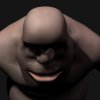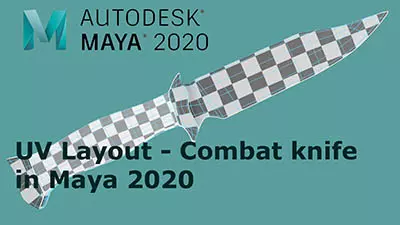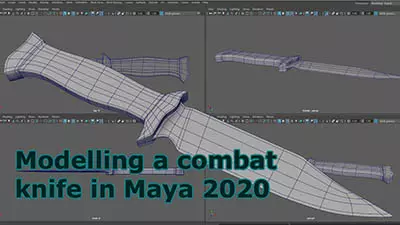Introduction to Maya - Rendering in Arnold
This course will look at the fundamentals of rendering in Arnold. We'll go through the different light types available, cameras, shaders, Arnold's render settings and finally how to split an image into render passes (AOV's), before we then reassemble it i
#
1
22-01-2004
, 11:46 AM
Couple of questions
Polygons, SubD and NURBS. I know that many things can me made using the different methods but what are the particular strengths of each type?
Whereabouts can I find the polygon count for my model?
Can you render in wireframe or with the tesselation displayed on the model?
#
2
22-01-2004
, 11:56 AM
Polygon count is in display>>heads up display>>poly count (i think).
there are loads of threads about rendering wireframes. Do a search on this forum and you will find loads.
Alan
#
3
22-01-2004
, 07:44 PM
Are you supposed to guess what the final model looks like as you're modelling? Not a great option.
Or am I missing something here?
#
4
22-01-2004
, 07:55 PM
I am enough of an artist to draw freely upon my imagination, knowledge is limited, imagination encircles the world. (Albert Einstein)
https://www.artstation.com/kurtb
#
5
22-01-2004
, 11:13 PM
#
6
23-01-2004
, 01:26 AM
The Polygons->smooth proxy option? What using these option do?
Is the Polygons->smooth proxy setting the same as Subd Surfaces->Polygon Proxy mode?
I just want to get these questions cleared up as I planning on doing a fairly detailed character model and I don't want to get half-way into the modelling and find I could've picked a better method.
#
7
23-01-2004
, 01:55 AM
#
8
23-01-2004
, 02:14 AM
If your computer is fast and can handle them performance wise, use the proxy modes, there cool.
#
9
23-01-2004
, 10:47 AM
Time to get started.
Update:
The smooth proxy option seems to do what I'm looking for. But I wonder if there's anyway to convert back to the proxy object and get rid of the smoothed one at some stage. Say if you wanted a low res version of the model?
Last edited by Clod; 23-01-2004 at 11:57 AM.
#
10
23-01-2004
, 01:12 PM
#
11
23-01-2004
, 03:24 PM
Subscriber
Join Date: Jun 2002
Join Date: Jun 2002
Location: Texas
Posts: 374
#
12
23-01-2004
, 07:20 PM
Yeah, but no but yeah but no....
Posting Rules Forum Rules
Similar Threads
couple theory questions from a begginer.
by kvnmcwebn in forum Maya Basics & Newbie Lounge replies 2 on 22-11-2011
A couple dumb newbie UV questions..
by SoftIce in forum Maya Materials & Textures replies 4 on 16-05-2011
Couple of Questions Views & Referance
by mattbarb in forum Maya Basics & Newbie Lounge replies 2 on 27-11-2007
New With A Couple Questions
by Krimman in forum Maya Basics & Newbie Lounge replies 1 on 15-12-2006
couple point questions
by Turbo Dan in forum Board Questions & Suggestions replies 5 on 07-10-2004
Topics
Free Courses
Full Courses
VFX News
How computer animation was used 30 years ago to make a Roger Rabbit short
On 2022-07-18 14:30:13
Sneak peek at Houdini 19.5
On 2022-07-18 14:17:59
VFX Breakdown The Man Who Fell To Earth
On 2022-07-15 13:14:36
Resident Evil - Teaser Trailer
On 2022-05-13 13:52:25
New cloud modeling nodes for Bifrost
On 2022-05-02 20:24:13
MPC Showreel 2022
On 2022-04-13 16:02:13














